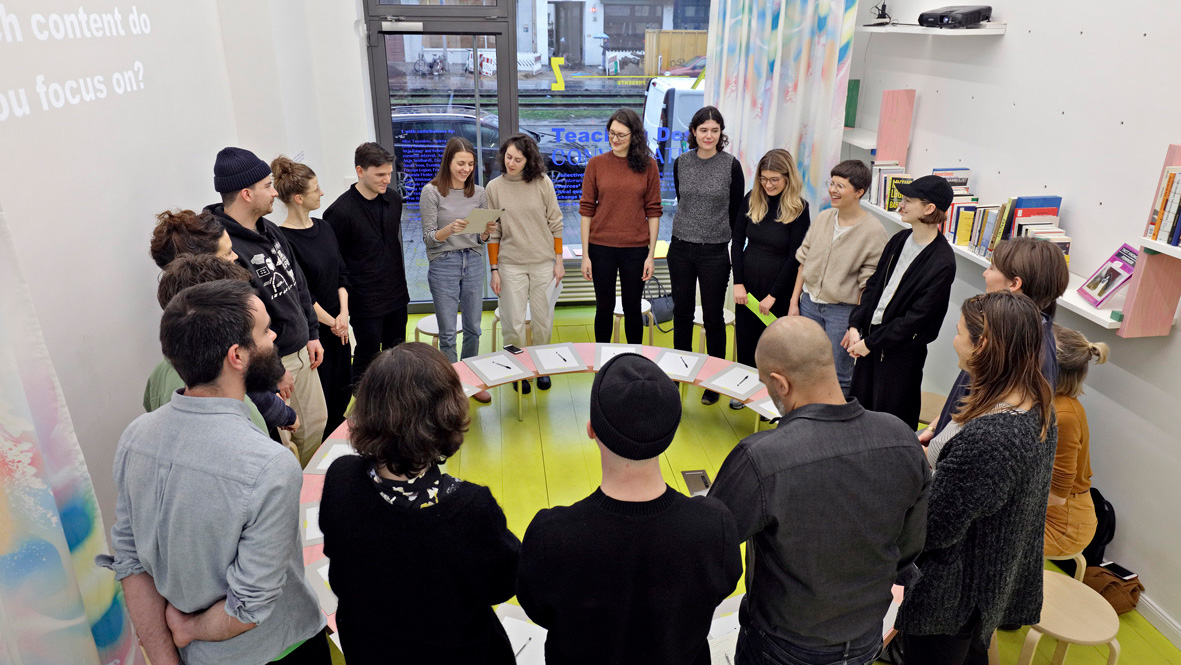Lisa Baumgarten
Critical design mediation – Kritische Designvermittlung
⤻ Design ⤻ Research/Writing ⤻ Education/Workshops ⤻ Curation

Why do I do what I do like I do it and not differently?
Workshop with Antonia Schneemann, as part of the exhibition Teaching Design Conversations at A–Z Berlin, in January, 2020In the course of the exhibition Teaching Design CONVERSATIONS we conceived methods based on the connection of critical practice and design pedagogy and tested them together with 20 participants. The focus was on the following key questions: How do we SEE? How do we ACT? How do we THINK? And how do we want to TEACH, LEARN and WORK together?
The aim was to encourage the participants to reflect on their own practice, to give them the space to pursue their own questions and approaches and to learn from each other in dialogue - without formulating definitive, universally valid answers and instructions.
How do we SEE? – Acknowledging and changing perspectives
What is my perspective? How is it influenced by my education for instance?
We all have a perspective on our own practice. Observing ourselves, exchanging views with others and taking different perspectives makes us more sensitive to working with others.
How do we ACT? – Maintaining one's stance and allowing group processes
How can a productive cooperation be achieved without ignoring different mindsets?
We all have an individual standpoint in relation to our practice. It is our inner compass, but it can also lead to dissent in the context of collective processes in which people work together. This includes the work between teachers and students.
How do we THINK? – Reflecting on and transforming ways of knowing and thought patterns
How do we recognise and break through prejudices and thought patterns?
Our level of knowledge and our thought patterns are also an integral part of our practice. They are individual and develop in certain social relationships.
How do we want to TEACH, LEARN and WORK together? – Collaboration: How do we, as teachers and/or students, want to work together? How can we avoid exclusion in our practice? In the last method the participants worked out and reflected on possible forms of collaboration between teachers and students in small groups.



